| Halfway House |
The Halfway House opened in about 1914 and was a popular New Orleans dance hall.
It was located on City Park Avenue, along the New Basin Canal, and took its name from
the fact that the spot was halfway between the city's business district and the lakefront.
The club was especially crowded on weekends. As people made their way home from
lake resorts like Milneberg and West End, they would stop to have a dance, because
the Halfway House always had a great band.
During its time, a host of gifted Jazz musicians entertained a generation of New
Orleanians at the Halfway House. In the late teens, New Orleans composer and
violinist, Armand Piron, led the house orchestra (his composition, “I Wish That I Could
Shimmy Like My Sister Kate” became a national hit). By 1920, the band was under the
direction of cornet player Albert "Abbie" Brunies, who directed the Halfway House
Orchestra until 1927.
It was located on City Park Avenue, along the New Basin Canal, and took its name from
the fact that the spot was halfway between the city's business district and the lakefront.
The club was especially crowded on weekends. As people made their way home from
lake resorts like Milneberg and West End, they would stop to have a dance, because
the Halfway House always had a great band.
During its time, a host of gifted Jazz musicians entertained a generation of New
Orleanians at the Halfway House. In the late teens, New Orleans composer and
violinist, Armand Piron, led the house orchestra (his composition, “I Wish That I Could
Shimmy Like My Sister Kate” became a national hit). By 1920, the band was under the
direction of cornet player Albert "Abbie" Brunies, who directed the Halfway House
Orchestra until 1927.
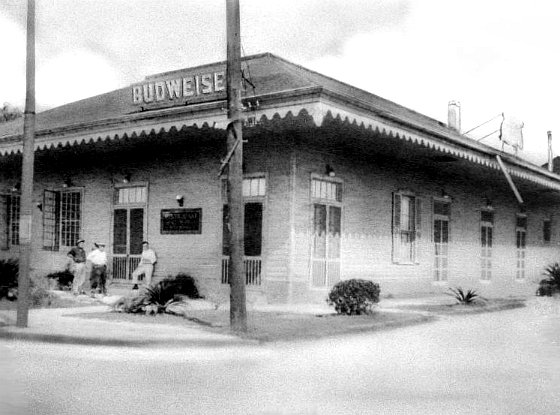
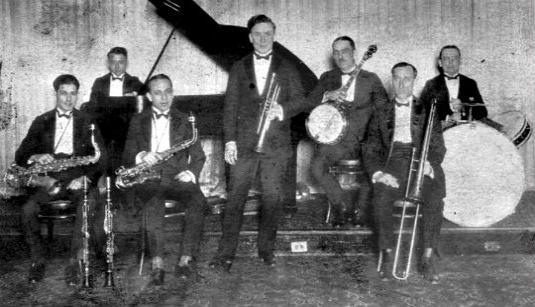
They were an extremely popular band and made several recordings. In addition to Mr.
Brunies, some of the musicians who played with the band through the years, either as
regular or stand-in, were Charlie Cordella, Mickie Marcour, Leon Roppolo, Sidney
Arodin, Bill Eastwood, Joe Loyacano, Leo Adde, Emile "Stale Bread" Lacoume, Paul
Mares, Glyn Lea "Red" Long, Chink Martin, Angelo Palmisano, Emmett Rodgers,
Johnny Saba and Bill Whitmore.
Brunies, some of the musicians who played with the band through the years, either as
regular or stand-in, were Charlie Cordella, Mickie Marcour, Leon Roppolo, Sidney
Arodin, Bill Eastwood, Joe Loyacano, Leo Adde, Emile "Stale Bread" Lacoume, Paul
Mares, Glyn Lea "Red" Long, Chink Martin, Angelo Palmisano, Emmett Rodgers,
Johnny Saba and Bill Whitmore.
| Halfway House Orchestra; seated on the left: Charlie Cordella, Mickie Marcour, Leon Roppolo; seated on the right: Bill Eastwood, Joe Loyacano, Leo Adde; standing in center: leader, Abbie Brunies |
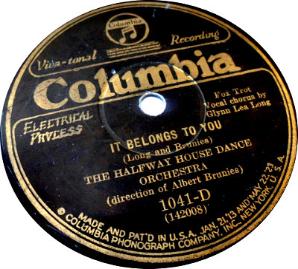
Halfway House closed its doors in the 1930's, a victim of the Depression. An ice cream
parlor opened in its place and remained until after WWII - a favorite spot for people on
their way to and from the lake, just as Halfway House had been in its era.
In 1952, Orkin Pest Control moved into the building and did a major renovation. They
stayed in this location until the mid-1990's. The building was abandoned and, in 2000,
suffered extensive damage in a fire. In 2005, flooding from the levee failures further
damaged the structure.
Through the years, efforts were made to have the building declared a local historic
landmark and funds sought to restore it. The New Orleans Jazz Restoration Society,
particularly, worked toward that end, with a goal of turning it into a Jazz museum and live
music venue.
parlor opened in its place and remained until after WWII - a favorite spot for people on
their way to and from the lake, just as Halfway House had been in its era.
In 1952, Orkin Pest Control moved into the building and did a major renovation. They
stayed in this location until the mid-1990's. The building was abandoned and, in 2000,
suffered extensive damage in a fire. In 2005, flooding from the levee failures further
damaged the structure.
Through the years, efforts were made to have the building declared a local historic
landmark and funds sought to restore it. The New Orleans Jazz Restoration Society,
particularly, worked toward that end, with a goal of turning it into a Jazz museum and live
music venue.
Conservation groups and the city battled back and forth over the issue for years, with
the city desiring to have the building demolished, but the old Halfway House always
seemed to get a last minute reprieve. Finally, in 2009, the Historic District Landmarks
Commission approved its nomination as landmark and the city council upheld it. An
agreement was reached between the Jazz Restoration Society and the city agency
which holds a lease on the property and it looked as if the historic building might be
saved. However, after environmental tests found that the property had substantial
contamination - high concentrations of pesticides - under the slab and behind the
building, from the years when Orkin was on the site, it was deemed unsuitable for
renovation.
In 2010, the building that had played host to so many early New Orleans Jazz
musicians was demolished.
A study by the New Orleans Jazz Commission in 1989 identified 3,000 historic Jazz-
related buildings throughout the city. In 2009, only about 700 remained. -- Nancy
the city desiring to have the building demolished, but the old Halfway House always
seemed to get a last minute reprieve. Finally, in 2009, the Historic District Landmarks
Commission approved its nomination as landmark and the city council upheld it. An
agreement was reached between the Jazz Restoration Society and the city agency
which holds a lease on the property and it looked as if the historic building might be
saved. However, after environmental tests found that the property had substantial
contamination - high concentrations of pesticides - under the slab and behind the
building, from the years when Orkin was on the site, it was deemed unsuitable for
renovation.
In 2010, the building that had played host to so many early New Orleans Jazz
musicians was demolished.
A study by the New Orleans Jazz Commission in 1989 identified 3,000 historic Jazz-
related buildings throughout the city. In 2009, only about 700 remained. -- Nancy
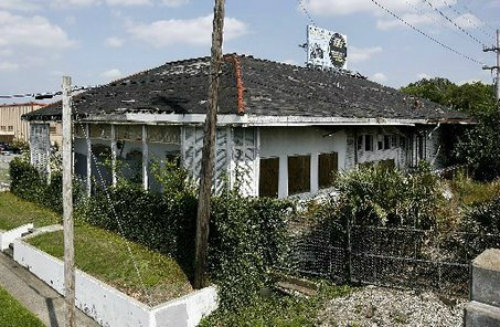
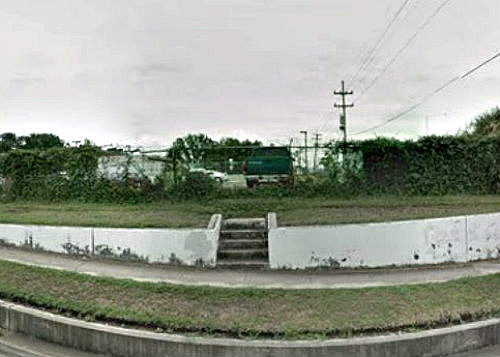
| Halfway House, 2009 |
| The old Halfway House steps lead nowhere now. |
| The link to this page is: http://old-new-orleans.com/NO_Halfway_House.html Back to New Orleans and the Birth of Jazz Back to Old New Orleans Index Whispers - Home |